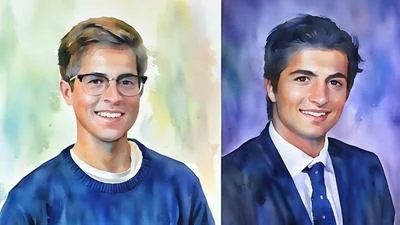Energy and Commerce Ranking Member Frank Pallone, Jr. (D-NJ) gave the following opening statement today at a Subcommittee on Oversight and Investigations Hearing on “Concussions in Youth Sports: Evaluating Prevention and Research."
I want to thank all of our participants for joining us today. Additionally, I’d like to thank the Chairman for his commitment to this Committee’s examination of concussions and brain trauma.
Earlier this year, we had an initial roundtable on this issue, and at the time, I requested to Chairman Upton that we hold a series of hearings on concussions and sports-related head trauma. I proposed that we start with an examination of head impacts in youth sports. I am gratified that we are here today to discuss this very topic, and I look forward to additional hearings on this important issue.
Parents across the country are concerned about the risks of concussions, and with good reason. I have my own experience as a parent in dealing with a child’s concussion and deciphering the medical advice provided. It is challenging as a parent to balance the news stories and the results of the latest research against the value of our children’s participation in sports. I can certainly relate to parents’ concerns, and their confusion about how to make the right decisions for their children.
There is compelling research to suggest that the effects of repeated head trauma - even those received during one’s youth - can accumulate and cause serious consequences. And these consequences can stem from injuries once considered minor, known as subconcussive hits, or repetitive hits to the head.
Purdue University researchers, led by one of our witnesses today, Dr. Tom Talavage, found significant structural changes to the brains of high school football players, even among those who were not diagnosed with a single concussion. What is particularly troubling is that these changes persisted even 12 months later, suggesting lasting damage.
Many other studies have documented an association between subconcussive hits and changes in brain chemistry, decreased brain functioning, and behavioral changes. A recent study by a group of researchers at Boston University found that exposure to hits, regardless of whether a concussion occurred, is associated with a higher likelihood of mood disorders like depression.
Researchers have also repeatedly found evidence of a linkage between head impacts and CTE, a devastating degenerative brain disease. CTE has been found in former athletes as young as 25 years old and in adults who never played football beyond the high school level.
There remain a number of unanswered questions about what risk factors make individuals more susceptible to these debilitating conditions. We also need to understand what happens in the brain when it’s hit, and how many hits trigger these neurological effects.
While there is still research that needs to be done, that should not be an excuse for inaction. What is not in dispute is the association between head trauma from contact sports, such as football, and lasting brain damage and degenerative diseases such as CTE. Even the NFL publicly acknowledged this link at this Committee’s roundtable back in March.
Some researchers in this field suggest that we should “wait on the science" before making changes to the rules of youth sports. I respectfully disagree. We cannot ask children and their parents to wait 10, 15, or 20 years for the science to catch up before we take measures to make sports safer.
We need to be asking questions right now and implementing the appropriate rule changes.
The science has raised enough red flags about the dangers of repetitive head trauma that I think it is incumbent upon those who organize and promote youth contact sports to take every effort to make the games as safe as possible.
Earlier this month, Subcommittee Ranking Members DeGette, Green and Schakowsky joined me in sending letters to collegiate and youth football leaders. We asked them to explain what rule or policy changes they are considering to address the risks associated with both concussive and subconcussive hits. I expect that they will respond to us by May 25th. And I commend Pop Warner for announcing yesterday that it would ban kickoffs in games starting this fall. I also look forward to hearing today from the other youth sports organizations about what they are each doing for their individual sports, and whether additional measures need to be considered.
Last, I want to express my deep thanks to both Kelli Jantz and Karen Zegel for joining us today. I cannot even imagine the losses you and your families have experienced. Thank you for your willingness to share your experiences with this Committee. We can learn from you as we pave a path forward to better protect our kids.
Thank you again to all of our witnesses for your contributions and for helping us with our comprehensive review of concussions and head trauma. I hope we can all continue to work together to find the best ways to address this significant public health issue to protect our children.





